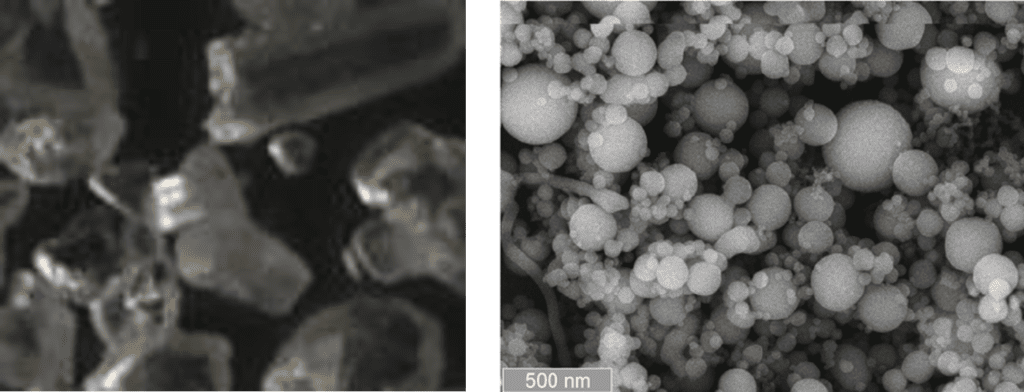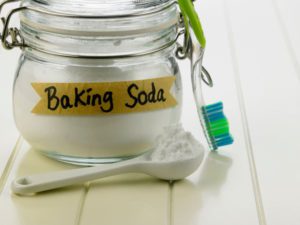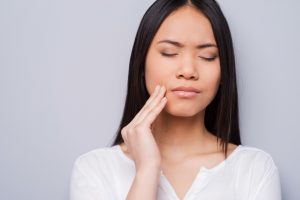Patients ask us about various topics all the time. As their doctor, and an
expert, we really want to feel comfortable answering those questions
with accurate information. I’ve received several questions from dentists
about the use of baking soda (sodium bicarbonate) as an alternative to
commercial toothpaste, and especially regarding its claimed ability to
whiten teeth. Obviously, these dentists have been asked these same
questions by their patients, who’ve seen wild claims all across the
internet. As a consequence, I took a look at the claims on the Internet
about baking soda. To say I was blown away with the inaccuracy
(including some articles written by dentists) is an understatement. So
I thought the following information may be of help to you. Search the
Internet regarding brushing your teeth or whitening your teeth with
baking soda, and among other ridiculous things, you’ll routinely see
the claim that baking soda is VERY abrasive to use on your teeth –
so if you use it, don’t use it every day. Absolutely wrong! These
statements are not only wrong, but they’re pretty much as wrong as
you can get. Baking soda (the stuff in the box in the super market) is,
by far, the lowest abrasiveness of anything you would ever brush your
teeth with. Here’s the problem – non-scientists writing articles based
on assumption, and not proven fact. And once ONE person writes
something, others quote him or her. Then when you have several
people saying that same [false] thing, people state it and believe
it as fact. After all, if enough people say the same thing, it must be
fact, right? Wrong! And the most disconcerting thing for me is that
some of these articles have been written by dentists, who also simply
read what others said on the internet, so they too assumed that
baking soda is excessively abrasive. Why do so many people
“assume” baking soda is extremely abrasive? It’s because the
particles are large and have sharp edges, so it “feels” gritty when
you touch it. Below on the left you see a microscopic photo of
baking soda particles. Notice how they have edges and corners.
Below on the right you see silica particles, which would be the
most common abrasive in toothpastes. Notice how rounded and
smooth the silica particles are. But also realize that the baking
soda particles are much, much larger than the silica particles.
Baking soda particles can be as much as 15 times larger than silica
particles in toothpaste.

So what’s the difference? Silica particles are much, much harder than
baking soda particles. When you forcefully rub two hard objects
against each other, the harder object will have almost zero damage,
and the softer object will be greatly scratched and damaged.
For example, a diamond is a hardness of 10 on the Mohs Hardness
Scale, and glass is rated at 5. So diamond is two times harder than
glass. Well, that’s not exactly true because the Mohs Hardness
Scale is an ordinal scale, so there is no data on how much difference
there is between the numbers. But you already know if a diamond is
firmly rubbed against glass, it will scratch the glass, but the diamond
will not be damaged. Mohs Hardness of materials (remember this is
an ordinal scale, so there is no mathematical formula of consistent distance between each number):Tooth enamel = 5Tooth dentin/root = 3Baking
soda = 2.5Hydrated silica in toothpaste = 5-7Baking soda “feels” much
more gritty than regular toothpaste (which usually has hydrated silica
as the abrasive) because the particles are larger, and the edges are
rough. Whereas silica particles are more round, smooth, and many
times smaller. So baking soda “feels” more abrasive – but it’s not.
The fact is that Baking Soda, being much softer than tooth enamel,
and very slightly softer than even tooth dentin, will not create much
damage (abrasion) to the tooth. The American Dental Association has
published their RDA (Relative Dentin Abrasivity) to measure the
abrasiveness of various toothpastes. The RDA abrasiveness categories
are:Low 4-70 (plain water is 4. Baking soda is 7.)Medium 70-100High
100-150Harmful 150-250 The FDA limits abrasiveness to a maximum
of RDA 200. Get this…the RDA of Arm & Hammer baking soda is only 7.
Whereas the most typical tooth paste will be in the 70-100 range with
many far above that. THAT is how gentle baking soda is, as far as
abrasion to your teeth. Of course, keep in mind that commercial
toothpastes that claim to be baking soda toothpastes also contain other
abrasives. So using baking soda in the commercial toothpaste may
be thought of as somewhat of a marketing gimmick to get you to buy
the toothpaste. This means you can brush your teeth with more paste
and for a longer time if you’re using straight baking soda mixed to a
paste with only water. That alone will help physically remove more
bacteria and more stain. Why? Stain will typically be softer than baking
soda, so, though baking soda will not cause much abrasion of your teeth,
it’s still hard enough to scrape off many types of stain from your teeth.
The main problem with using straight baking soda/water paste? No
fluoride. And of course, baking soda is harder than gingival tissue, so
brushing longer may cause gingival abrasion and recession over time.
So there’s good and bad here.
Baking Soda to Whiten Your Teeth
So now let’s talk about the ridiculous claim that brushing with baking
soda will whiten your teeth. This is simply wrong…period! There has
never been any scientific study that even hints that baking soda may
whiten your teeth.
Of course, if you’re talking about using baking soda to simply brush
with to remove stain from the surface of your teeth, then yes, baking
soda will do that, just like any other toothpaste in the world. But does
it have any other chemical or other means of any kind that will “whiten” your teeth? Absolutely, positively not!
But now….the REALLY DANGEROUS information.
Of course, all dentists know how acid ravages tooth structure. When you do an Internet search of whitening your teeth with baking soda, often
you’ll find instructions to add lemon juice, apple cider vinegar or some
other acidic ingredient along with the baking soda. And you already
know what a bad idea THAT is!
But wait…it gets even worse…
You’re mixing baking soda, which is at least somewhat abrasive, and acid together. Gee, doesn’t that remind you of microabrasion products that
we dentists use on teeth to remove the surface of tooth structure – such as removing surface dark or white spots? Possibly the most popular
microabrasion product out there is Ultradent’s Opalustre. It’s an excellent product. It has hydrochloric acid mixed with silicon carbide
microparticles. The acid SOFTENS the surface tooth structure, which
the abrasive particles quickly remove. Mixing baking soda and lemon
juice or apple cider vinegar will do exactly the same thing, but on a
less aggressive scale. When thinking about patients doing this
continually over time, this is the perfect way to wear away their tooth
structure. And the thing that really kills me is that most using this
technique falsely believe it’s a very safe and “natural” way to whiten
teeth. Yeah, sure! “Natural” like a rattlesnake bite! But it’s one of the
worst, most ineffective, and especially permanently damaging things
you can do to your teeth.
Dr. Rod KurthyFounder/CEOEvolve Dental Technologies, Inc.
Thanks Dr. Kurthy for a great informative article…
~ Dr. Greg Friedman




